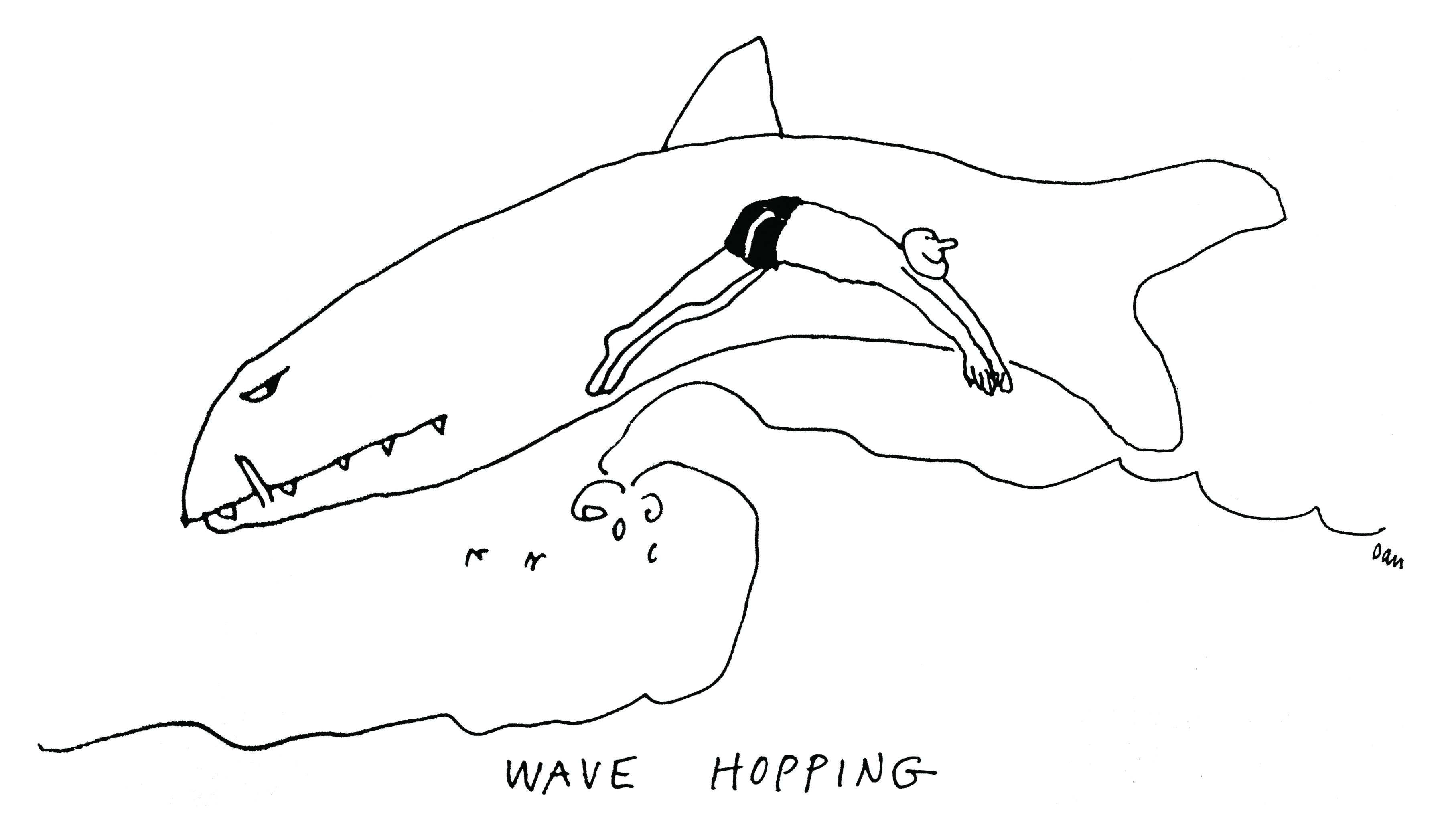Peter Benchley & Jaws: Hamptons in the Book vs. the Movie

The 1975 movie Jaws, which premiered at the East Hampton Cinema, was a pivotal moment in the history of the Hamptons. Before Jaws, the Hamptons was a summer resort where tourists shared the community with local farmers and fishermen. After that year, young Steven Spielberg, the director, moved here. And so did its stars, Roy Scheider and Richard Dreyfuss. And after that all manner of movie stars, producers and billionaires followed, turning the Hamptons into the world-class resort it is today.
Jaws became the highest-grossing film of all time when it came out. It sprang from a book written two years earlier by author Peter Benchley that spent 44 weeks on The New York Times bestseller list and, by the time of the premiere, had already sold more than 4 million copies. Eventually it sold 21 million. In reading it, other than the fiction of a 20-foot man-eating shark, you learn about this place. Scenes in the book happen in East Hampton, Sag Harbor, Southampton, Southampton Hospital, Montauk, and especially in the Village of Amity, a fictitious town invented by Benchley which, he wrote, existed along the ocean between Bridgehampton and East Hampton. It is in that town that the mayor and the police chief want to keep the shark horror quiet. If the truth got out, people would shun Amity and the locals would have to go on welfare. But then it does get out. And in the end a terrifying confrontation at sea happens where the shark gets hunted down and finally killed.
In the book, the creature dies from being harpooned and shot, then sinking slowly down to the bottom of the sea. In the movie, the great white is blown to bits by a rifle shot into a scuba tank that the shark is chewing on as he contemplates his final assault on the mortally wounded fishing boat. The tank explodes. Bang. A snowstorm of shredded shark meat comes fluttering down. After that, a scene at sea shows the chief of police and a marine biologist from Woods Hole Oceanographic Institution happily paddling toward the boat harbor at Amity Island, side by side aboard a wooden spar that the shark had previously gnawed on. The end.
Yes, in the movie, Amity is an island. A producer named David Brown explained why.
“The Hamptons was too grand and not fitting the idea of a vacation area that was lower middle class enough so that an appearance of a shark would destroy the tourist business.”
So how, in this column, can I claim that the movie, which doesn’t even mention the Hamptons, caused the changes that took this place from a little beach town into a glittering world-class resort?
Well, I think it happened because Spielberg, Scheider, Dreyfuss and the bigwigs from Universal spent so much time in the Hamptons studying the Hamptons’ peacefulness, closeness to New York City, great natural beauty, farmland, fishing community, history, oddball characters, cultural opportunities and celebrity artists, writers and actors living privately in wooded hideaways that well, they and the rest of the Hollywood community floated down into this place like so much shredded shark.
Change the movie. Change the Hamptons.
Well, as a sidebar to all this, I hereby present some of the changes Spielberg et al made from the book to the movie.
Ready?
In the book, Ellen, the wife of the chief of police, unhappy with her marriage, seduces the Woods Hole marine biologist. Chief Brody, physically assaults Matt Hooper, the marine biologist, at one point. And so it’s pretty awkward out on the boat when Hooper and Brody together with the Montauk fisherman Quint discuss how to kill this shark.
Hooper dies from a miscalculation after the others lower him in a steel cage to talk to the shark. The shark eats him. Fair punishment after Hooper’s dalliance with Brody’s wife Ellen. In the book, the number of people crunched up gruesomely by the shark’s persistent attacks are nearly double the number shown in the movie. The score is seven to four. Seven in a book of 300 pages seems necessary to keep the terror going. In the movie, only two of the four are shown up close and personal. A visual experience triumphs over the printed word.
In the book, the mayor of Amity, a local guy who’s gotten rich in real estate, is presented as a handsome, smooth-talking man welcome in the homes of the summer people. He wears crisply tailored suits with the family crest on the breast pocket. His determination to keep everything hush-hush turns out to be because he fears his mafia partners, who control his real estate interests, might accidently have him killed if he publicly says the beaches must close, souring their investments.
In the movie, the mayor is portrayed by Murray Hamilton as a cheap, back-slapping, overweight politician in a loud ill-fitting suit. If the truth gets out, the tourists won’t come and the fragile island economy will be ruined.
Spielberg, himself, after reading the book, said he had to make changes.
“All the characters in the book are bad people,” he said. “I rooted for the shark.”
Benchley was the grandson of Robert Benchley, the famous New Yorker editor who sat at the Algonquin Round Table in the 1920s and 1930s with Dorothy Parker and James Thurber. Peter grew up hoping to be a writer. Much of it fizzled until he pitched a publishing house for Jaws. Afterwards, he lived relatively modestly near Fairfield, Connecticut with his wife Wendy, interested mostly in working to save sharks – an endangered species.
As for the character Quint, the irascible, boozy, shark fisherman in the film, the author modeled him after a real Montauk shark fisherman named Frank Mundus.
“I’d read about him in a local paper in 1964 where he had harpooned and brought in a 4,500-pound great white,” he told one reporter. Reporters said he’d been on a charter with Mundus.
Early on, however, the suits at the studio denied it. I think they feared they’d have to pay Mundus if true.
I never met Peter Benchley. But both of us attended Harvard University at the same time — 1961.
I wonder if Benchley did stumble across the many stories I wrote during those years in Dan’s Papers about Mundus. Here’s a passage from some of my coverage back then.
“Although it was after sundown when I first heard about the catch, the fish was not hard to find in the dark behind Gosman’s. It was 8 feet in girth and about 16 feet long. The shine had dried to a dull gray, but the mouth, open to show the razor teeth, reminded me of the potency of the animal. Huge gill slits that could have cooled an engine hung limp behind the eyes….” — Dan Rattiner, July 1, 1960.









